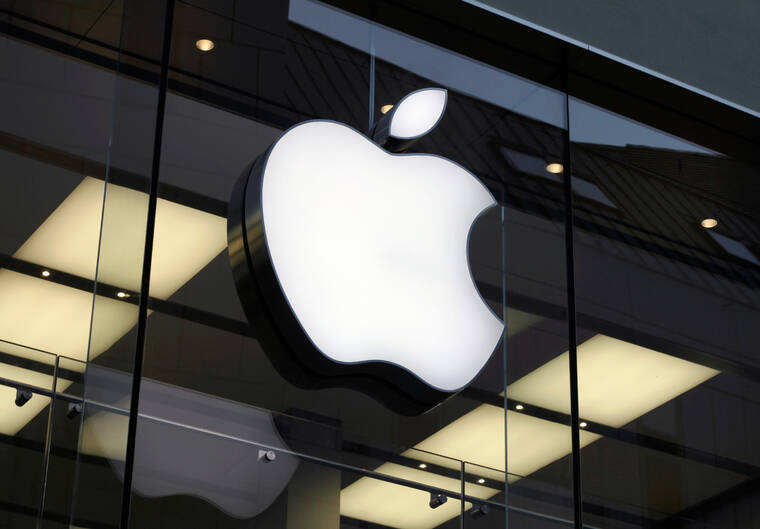Apple Inc. warned that supply constraints would cost the company $4 billion to $8 billion in the current quarter, sending the shares down and casting a pall on record-setting results that the company just reported.
COVID-19 restrictions, which have swept China in recent weeks, will take a toll on the June quarter, the company said on a conference call Thursday. Last quarter’s sales and profit had topped analysts’ estimates, fueled by strong demand for the iPhone and digital services, and the company announced $90 billion in new stock buybacks.
The outlook renewed concerns that supply-chain woes will hamper the tech industry. Apple shares tumbled as much as 6.2% to $153.50 in late trading after the remarks.
Sales last quarter rose 8.6% to $97.3 billion, a record for a non-holiday quarter, Apple said earlier on Thursday. Analysts had projected $94 billion on average. Profit came in at $1.52 a share, compared with a prediction of $1.42, initially sending the shares up in late trading.
Apple had previously said the March quarter would be a record, though its growth rate would decelerate for both the overall business and its services segment. The company’s December quarter was a blowout sales period, exceeding Wall Street estimates with an all-time revenue high of nearly $124 billion.
Following its usual pattern, Apple used its second-quarter report to increase its dividend and boost stock repurchases. The dividend will grow 5% to 23 cents a share.
Before Apple’s results were released Thursday afternoon, the stock had fallen about 7.8% this year, hurt by a broader tech downturn. Apple had gained 34% in 2021, its third straight year of increases.
Apple didn’t provide specific guidance for the third quarter, but the Cupertino, California-based company is facing headwinds — such as the COVID-19 restrictions in China — that are delaying shipments of key devices. It’s also contending with increasing inflation and a pullout from Russia following that country’s invasion of Ukraine. Analysts are projecting third-quarter revenue of about $86 billion.
In the fiscal second quarter, which ended in March, Apple generated $50.6 billion from the iPhone, its biggest source of revenue. That compared with an average estimate of $49.2 billion.
The company launched the low-cost iPhone SE in March, contributing to sales in the last quarter. But the flagship iPhone 13 may have been less of a draw than the previous year’s iPhone 12, which was more of a dramatic update. The iPhone 13 retained the earlier model’s design, with some minor upgrades that focused on camera improvements.
The Mac continued its resurgence, generating revenue of $10.4 billion in the quarter. Apple launched the high-powered Mac Studio desktop in the quarter, but many orders of that machine have been delayed due to supply chain shortages, customization time and high demand. The strong Mac sales are likely primarily due to the new MacBook Pros, though those models are now facing supply constraints as well.
The iPad brought in $7.65 billion, down 2.1% from the year-ago quarter. Despite new models — including an updated low-end iPad, a new iPad mini and updated iPad Air — the product continues to be one of Apple’s least-lucrative major segments. Some users have panned the device in recent months, saying its software features haven’t kept paced with hardware capabilities.
Apple’s Wearables, Home and Accessories category, which includes the Apple Watch, Apple TV, HomePod mini and AirPods, also missed estimates. The business generated $8.8 billion last quarter, compared with an estimate of $9 billion.



